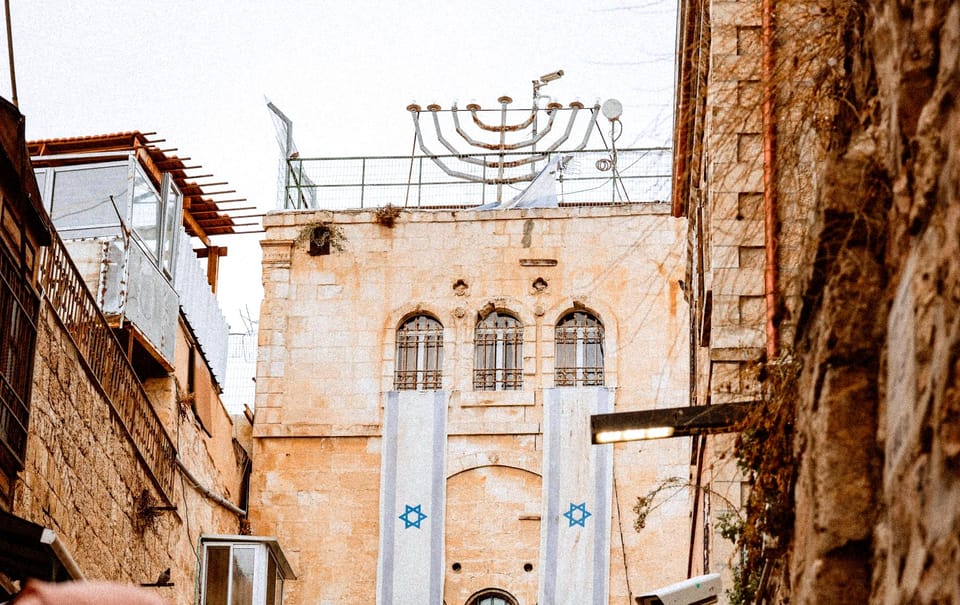What is the comparison between the founding of the State and the history of the Jewish people during the time of Chanukah?

The comparison between the founding of the State of Israel in 1948 and the events of Chanukah is both striking and sobering—especially through the lens of the Charedi Torah worldview. While the historical circumstances are vastly different in terms of timeline and politics, the spiritual dynamics share deep and meaningful parallels. Understanding these connections sheds light on why many Charedim saw the events of 1948 not as a redemption, but as a spiritual test echoing ancient struggles.
1. A Battle Over the Soul of the Jewish People
In both eras, the central conflict wasn’t simply political or military—it was a battle over Jewish identity.
- Chanukah Era: The Misyavnim (Hellenizers) sought to redefine Jewish identity based on Greek culture. They were Jews by ethnicity, but they championed art, philosophy, dress, and ideals imported from the gentile world. They wanted to remain “Jewish” but without the Torah. Without mitzvos. Without kedushah.
- 1948 Era: Many Zionist leaders—particularly those who founded the secular State—also desired a “new Jew.” A Jew who was strong, proud, and independent—but not a ben Torah. The Zionist ideology (especially in its early stages) openly rejected the image of the Torah Jew as weak, passive, or “galus-minded.” They wanted a Jewish identity rooted in land, language, and army—not halachah, mesorah, and yiras Shamayim.
Both movements sought to reshape what it meant to be a Jew—not by erasing it, but by secularizing it.
2. Majority Culture vs. Torah-True Minority
- In the time of Chanukah, the Misyavnim were the majority. They were admired by the world’s superpower—the Greek Empire—and held cultural and social influence over many Jews. The Torah Jews—led by the Chashmonaim—were a small, stubborn, and spiritually driven minority.
- In 1948, the secular Zionists held political control and international recognition. They founded the government, established schools, set the tone for Israeli society. The Torah Jews, meanwhile, were a fragile minority. Many had survived the Holocaust with little more than their emunah and a worn-out Gemara. Yet they remained fiercely loyal to Hashem and mesorah, even when mocked or marginalized.
In both cases, the spiritually faithful were not the dominant force—but they remained the eternal one.
3. Rejection of Torah Authority
Both the Misyavnim and the early secular Zionists shared something uncomfortable in common: they sought to build a Jewish future without the Torah’s guidance.
- The Misyavnim built alliances with the Greeks, downplayed mitzvah observance, and actively discouraged Torah leadership.
- Secular Zionists often excluded rabbanim from public leadership, created secular institutions, and in some cases even viewed religion as backward or as an obstacle to national progress. The fledgling state promoted chilul Shabbos, removed children from religious homes (as in the infamous Yemenite Children scandal), and pushed secular education as the ideal.
Both movements sidelined Torah in favor of culture, nationalism, and political sovereignty.
4. Resistance Through Torah
The Chashmonaim did not merely fight a military battle—they fought to restore Torah. Their rebellion was sparked not by taxes or oppression, but by spiritual defilement: the Greek attempt to ban bris milah, Shabbos, and Rosh Chodesh. The climax was the rededication of the Beis HaMikdash and the relighting of the Menorah—symbols of pure avodas Hashem.
In the 20th century, the Charedi community likewise responded to secularism not with violence, but with Torah. They rebuilt yeshivos, mikvaos, and batei medrash. They established schools and kollelim. They didn’t storm the Knesset—they stormed the heavens with tefillah. They responded to spiritual danger by strengthening the very foundation that had always defined the Jewish people: Torah, avodah, and chessed.
5. Divine Victory Is Not Measured by Numbers
History teaches us that the Chashmonaim—though few and mocked—are the ones remembered. The names of the Misyavnim are lost. The Greeks, despite all their glory, are now a footnote in our Al HaNisim prayer.
Likewise, the Torah world, though small at the founding of the State, has grown exponentially in Eretz Yisrael. Yeshivos, kollelim, frum communities, Torah institutions—none of this was predicted by the secular founders. It is Hashem’s victory. Quiet. Miraculous. Enduring.
6. Not Against the People—But for the Torah
It’s critical to note: Charedim today, like the Chashmonaim then, were never against Jews. They were against ideologies that cut Torah out of Jewish identity. The love for Klal Yisrael was—and remains—immense. But love must be guided by truth. Without Torah, love becomes sentiment. And without Hashem, even Jewish pride can become spiritual confusion.
Conclusion: Two Eras, One Struggle
The founding of the State in 1948 and the battle of Chanukah both represented pivotal moments in Jewish history—moments where the essence of Jewish identity was up for debate.
Both times, powerful Jewish movements arose, offering nationalism without Torah, pride without halachah, and sovereignty without Moshiach. And both times, Torah Jewry stood firm—not with hatred, but with heartbreak; not with protest, but with perseverance.
The Chashmonaim restored the Menorah. The Charedim restored the yeshivah. And in both cases, they reminded us that the light of Torah cannot be extinguished—even in the darkest of times.
Sources & Footnotes:
- Gemara Shabbos 21b, Al HaNisim prayer – Description of the spiritual battle during Chanukah.
- Yosifun – Historical account of Misyavnim and their cultural betrayal.
- Bereishis 17:8 – Hashem’s eternal promise of Eretz Yisrael to the Jewish people.
- Kesubos 111a – The Three Oaths and the boundaries of redemption.
- Ikvesa D’Meshicha, Rav Elchonon Wasserman zt”l – Warning against false messianism.
- Vayoel Moshe, Rav Yoel Teitelbaum zt”l – Parallel between secular Zionism and Hellenistic assimilation.
- Pe’er HaDor, Mishnas Rav Aharon, Uvdos VeHanhagos LeBeis Brisk – Gedolim’s responses to Zionism and secular culture.
- Ramban, Vayikra 18:25 – Eretz Yisrael’s holiness is maintained only through mitzvah observance.
